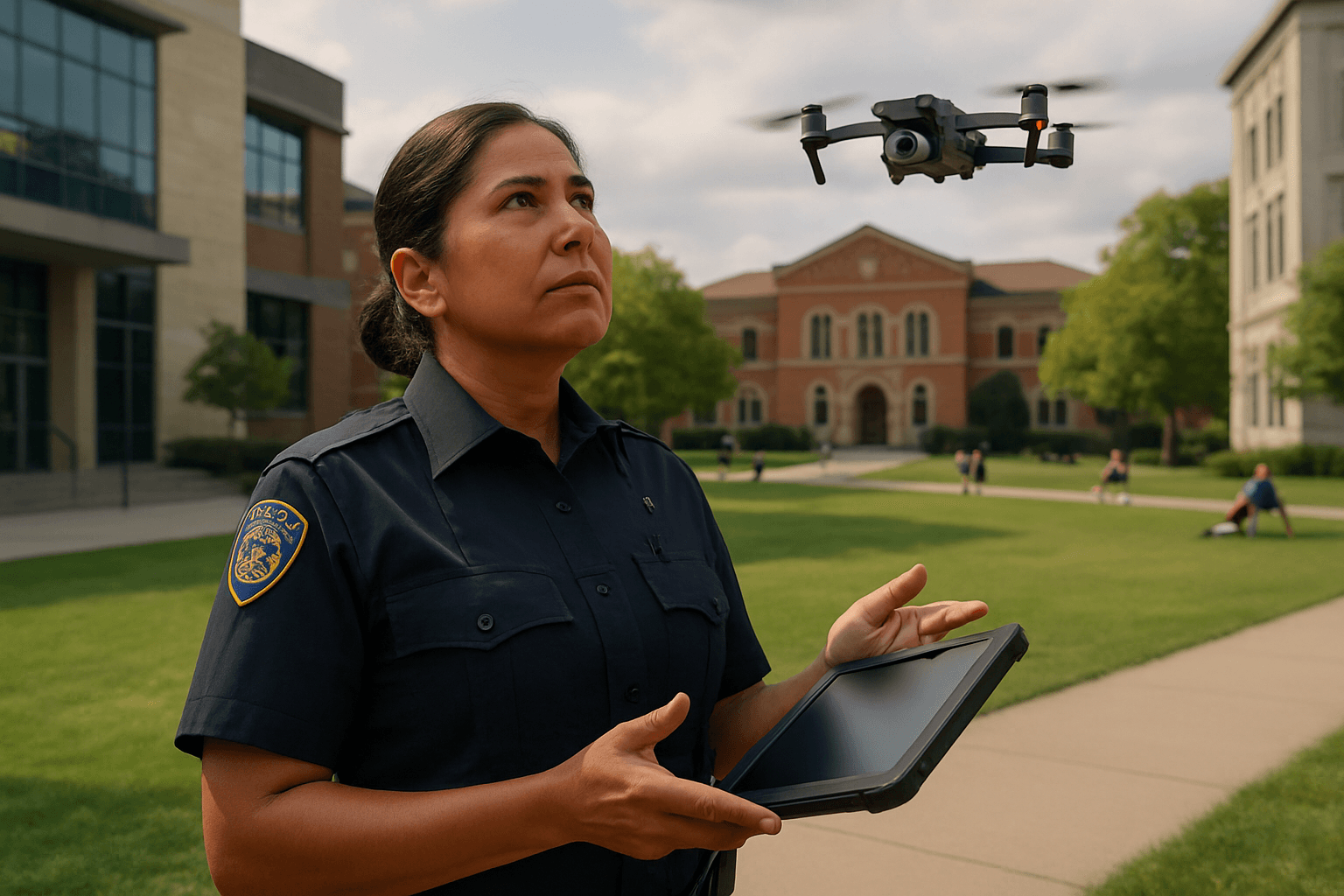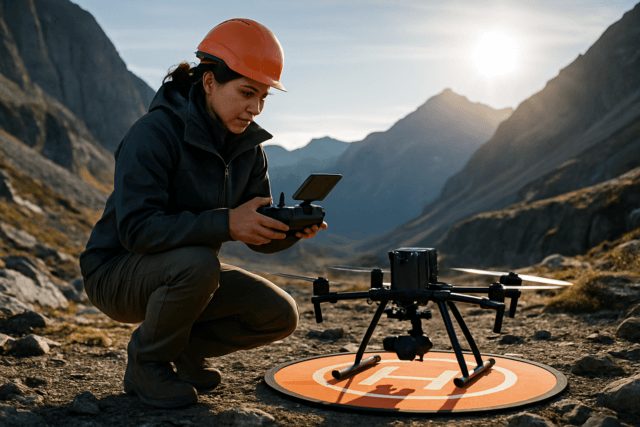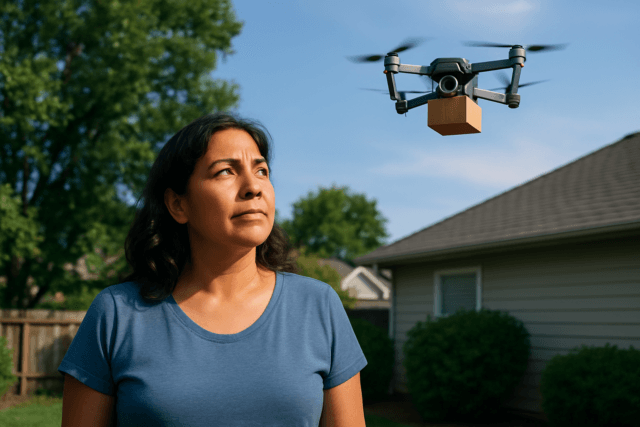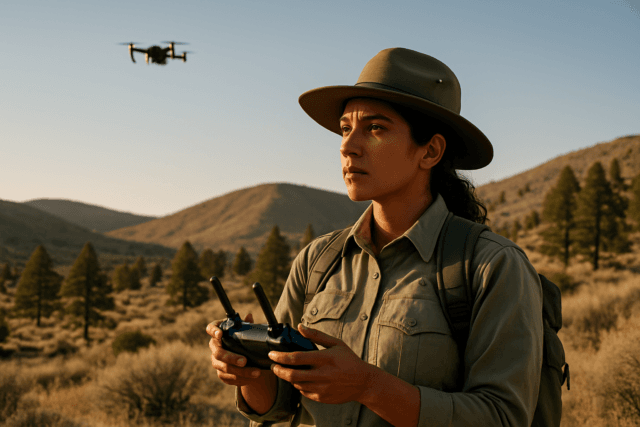Educational campuses, from sprawling universities to K-12 schools, face ever-evolving security challenges, ranging from unauthorized intrusions to managing large-scale events and responding to emergencies. In this complex landscape, Unmanned Aerial Vehicles (UAVs), commonly known as drones, are emerging as a powerful and versatile tool, revolutionizing how institutions safeguard their students, staff, and assets. By offering unparalleled aerial perspectives and real-time data, drones are enhancing traditional security measures and creating safer learning environments.
The Versatile Capabilities of Drones in Campus Security
Modern drones are equipped with advanced sensors, high-definition cameras, and sophisticated navigation systems, making them exceptionally capable for a variety of security applications. Their agility and ability to cover large areas quickly provide a significant advantage over ground-based patrols.
Enhanced Surveillance and Perimeter Monitoring
Drones provide a “bird’s-eye view” of extensive school grounds, including parking lots, sports fields, and building entrances, allowing for comprehensive monitoring. They can be programmed to conduct regular patrols of campus perimeters, detecting unusual activities or potential breaches and immediately alerting security personnel. This aerial perspective eliminates blind spots that traditional static cameras might miss, offering a more complete picture of the area under surveillance.
Rapid Emergency Response and Situational Awareness
In critical incidents, every second counts. Drones can be dispatched quickly to an incident location, arriving faster than ground personnel to assess the situation. They provide live video feeds and real-time situational awareness to first responders and command staff, enabling them to make informed decisions and coordinate responses more effectively. This immediate visual intelligence is invaluable during active threats, missing person searches, or accident assessments.
Crowd and Traffic Management
Large campus events, such as sporting games, concerts, or graduation ceremonies, present significant crowd and traffic management challenges. Drones can offer an aerial overview of these gatherings, helping security teams monitor crowd density, identify potential bottlenecks, and direct traffic flow. This capability ensures the safety of large congregations and helps prevent incidents.
Facility Inspections and Damage Assessment
Beyond immediate security, drones contribute to the overall safety and maintenance of campus infrastructure. They can conduct aerial inspections of roofs, gutters, and other hard-to-reach building exteriors, identifying maintenance needs more safely and efficiently than traditional methods. After severe weather or other incidents, drones can quickly assess damage, helping prioritize repairs and minimizing disruption. Drones equipped with thermal cameras can even detect energy leaks in buildings, improving efficiency.
Incident Documentation and Evidence Collection
For any security incident, detailed documentation is crucial. Drones can capture high-quality video and photographic evidence of crime scenes, accidents, or suspicious activities, providing invaluable data for investigations and post-incident analysis.
Key Benefits of Integrating Drones into Campus Security
The adoption of drone technology for campus security offers several compelling advantages for educational institutions.
Increased Efficiency and Cost-Effectiveness
Deploying drones for patrols and surveillance can be significantly more efficient and cost-effective than relying solely on human patrols or expensive aerial assets like helicopters. Automated drone systems can cover vast areas quickly, reducing the need for extensive staffing and lowering operational costs.
Enhanced Situational Awareness
Drones provide an unparalleled level of situational awareness, delivering real-time visual information that ground teams or fixed cameras cannot. This comprehensive view allows security personnel to understand complex situations rapidly and deploy resources strategically.
Faster Response Times
The ability of drones to quickly reach and assess an incident scene means security and emergency services can respond much faster, potentially mitigating risks and minimizing harm.
Deterrent Effect
The visible presence of drones conducting surveillance can act as a significant deterrent to potential intruders or individuals with malicious intent, thereby improving overall campus security.
24/7 and All-Weather Capabilities
Advanced drones can be equipped with various payloads, including thermal cameras, allowing them to operate effectively day or night and in challenging weather conditions such as fog or light rain, providing continuous monitoring.
Navigating the Challenges and Considerations
While the benefits are clear, integrating drones into campus security programs requires careful consideration of several challenges, including regulatory compliance, privacy concerns, and potential misuse.
Regulatory Compliance and Pilot Certification
The Federal Aviation Administration (FAA) regulates drone operations in the United States. Educational institutions must adhere to these regulations, which vary depending on whether the drone is used for recreational, educational, or commercial purposes. Operations typically fall under Part 107 (for commercial or public safety missions) or Section 44809 (for recreational and certain educational/research purposes). Remote ID requirements also apply, though educational institutions can apply for exemptions. Compliance often involves drone registration and obtaining a Remote Pilot Certificate for operators.
Privacy Concerns
The use of camera-equipped drones raises significant privacy concerns, particularly regarding students and staff on campus. There are worries about potential surveillance, unauthorized recording, and data security. Institutions must develop clear, transparent policies outlining when, where, and why drones will be used, alongside strict data handling protocols.
Potential for Misuse and Security Threats from Drones
Ironically, while drones enhance security, they can also pose threats. Unauthorized drones can be used for spying, smuggling contraband, industrial espionage, or even weaponized attacks. Educational campuses must therefore consider counter-drone technologies and strategies to detect and mitigate unauthorized drone activity in their airspace.
Cybersecurity Vulnerabilities
Like any networked technology, drones are susceptible to hacking. Cybersecurity concerns include the potential for unauthorized access to drone controls, data streams, or even taking over the drone itself. Research is ongoing to develop robust cybersecurity measures for UAVs to prevent such attacks.
Liability and Insurance
The operation of drones carries inherent risks, including the potential for property damage or personal injury. Educational institutions must ensure adequate insurance coverage is in place, as general liability policies may not cover aircraft. Developing clear policies for drone use, including training and operational guidelines, is crucial for mitigating liability.
Implementation and Policy Development
Successful integration of drones into campus security requires a strategic approach:
- Define Objectives: Clearly identify specific security needs and how drones can address them.
- Select Appropriate Equipment: Choose drones with the necessary capabilities (e.g., thermal cameras, long flight times, autonomous features) for the intended applications.
- Develop Comprehensive Policies: Create detailed policies outlining permissible drone use, no-fly zones, data retention, privacy safeguards, and consequences for non-compliance.
- Training and Certification: Ensure all drone operators are properly trained and hold the required FAA certifications.
- Community Engagement: Inform students, staff, and the broader community about drone usage, policies, and their benefits to foster understanding and trust.
Conclusion
Drones offer a powerful and increasingly essential layer of security for educational campuses, providing capabilities that were once the exclusive domain of much more expensive and complex aircraft. From enhanced surveillance and rapid emergency response to efficient facility management, UAVs are transforming campus safety protocols. However, to fully harness their potential, institutions must proactively address the associated challenges, including regulatory compliance, privacy, and cybersecurity, through thoughtful planning, robust policies, and ongoing community engagement. As drone technology continues to advance, its role in creating smarter, safer learning environments will only expand.





